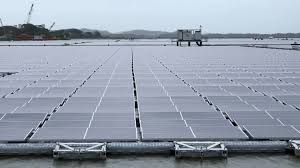
India may benefit from US tariffs on ASEAN solar exports, but challenges remain due to US subsidy cuts, domestic push, and India’s reliance on Chinese polysilicon.
South East Asia accounted for 80% of the US imports of solar cells and modules in 2024. However, from Monday (June 16), the US Customs and Border Protection will begin imposing anti-dumping ranging from 14% to more than 3,500% on imports of solar cells and modules from Thailand, Cambodia, Vietnam and Malaysia. In some cases, these duties are so high that they amount to a de facto ban on ASEAN solar exports to the US.
US Tariffs Reshape Global Solar Trade
Domestic demand for solar cells and modules remains limited as the South East Asian region continues to depend heavily on coal and natural gas for electricity generation. Therefore, these prohibitive anti-dumping and countervailing duties, which will be in addition to any country-specific import tariffs already put in place by the Trump administration, will virtually close the US market for ASEAN exports of solar cells and panels.
Many argue that this opens up a big opportunity for India’s export of solar cells and modules to the US market.
However, they should temper their expectations for two reasons. First, Trump’s tax bill signals a potential rollback of clean energy subsidies, with accelerated expiry of key tax credits and stricter qualification requirements - that is likely to slow clean energy expansion in the US. Second, the US seeks to promote its domestic solar industry. That’s why it’s trying to prevent the rerouting of Chinese solar materials through ASEAN countries by imposing anti-dumping and countervailing duties on these Southeast Asian nations.
China supplies 100% of India’s polysilicon requirements, most of which is produced in the Xinjiang Uyghur Autonomous Region, making them subject to a de facto ban by the US. This forced China to relocate part of its solar manufacturing facilities to the South East Asia region to protect its access to the US market.
Source: Money Control
Share: